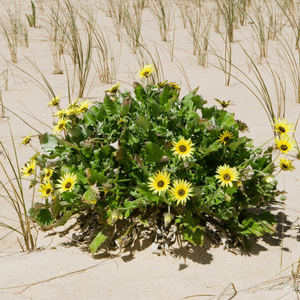Weed Identification for Common Grass Weeds
7
OCTOBER, 2017
Weed Control
Maintenance
It’s time now to prepare your lawn for the grass weeds to come this year. Weed identification can be the hardest part of the process but essential. Once you know what it is, you know how to best treat it. But more importantly, prevent grass weeds by keeping your lawn healthy.
Wintergrass
Wintergrass grows in tufts of light to dark green leaves. It emerges from autumn to spring but can infest lawns year-round in the shade. It’s seed heads produce plenty of seeds soon after germination which are easily spread through the wind, water and traffic.


Capeweed
Capeweed is a winter annual that forms in a rosette shape. The deeply lobed leaves have a white underside. Small flowers stand above the leaves with a black centre and creamy-white petals.
Crowsfoot Grass
Crowsfoot Grass appears yearly around summer. It has flat, dark green stems and the leaves sprout from white sheaths. This weed tends to seed from late spring, throughout summer and into autumn. It’s seed heads have between 2 and 10 spikelets on a long stem.
A node is a point of the plant that leaves or bud sprout.
A biennial plant grows over two years. The first year it produces leaves, stems and roots. Then, in the second year, it sprouts flowers.

Nutgrass
Nutgrass is a rapidly spreading perennial sedge. With flat leaves and stems, Nutgrass has small yellow-brown seeds that are produced in narrow spikelets during summer. Nutgrass is difficult to remove due to its underground tubers that can regrow.
Dandelion
A perennial weed, the dandelion is well known for its white, puffy seed heads. It produces yellow flowers in spring and summer from long, hollow, purple stems. As well as the parachuting white seeds, Dandelions can spread through fragments of its taproot.

A sedge plant is similar looking to grass that typically grows in wet ground. They have triangular stems and inconspicuous flowers.
A perennial is a plant that lives for more than two years.
Summergrass
A summer annual, Summergrass crawls across the ground with roots growing for the nodes. Broad, glossy leaves sprout from often purple sheaths with seed heads appearing from late summer to autumn. The seeds are black and sticky, spreading easily through passing traffic.
Cudweed
Cudweed is a winter biennial, forming in a basal rosette. With waxy green leaves, oblong in shape, the underside is a silvery white. Cudweed will typically flower in early summer or autumn and the flowers can be brown, purple or pink. This weed produces an abundance of seeds, so it is best to get rid of the seeds before it can spread.


Mullumbimby Couch
A perennial sedge, Mullumbimby Couch grows in mats and has a similar appearance to grass. It can grow up to 15 cm high with dark green, glossy leaves. It produces a single, compact seed head that has three short leaves emerging from its base. Mullumbimby Couch flowers in warmer months and spreads through its seeds and rhizome fragments.
Bindii
The bindii is recognised by most Australian children by its hard, spiky seeds. It is a low-growing perennial with roots growing from the nodes. With carrot-like leaves, the seeds appear in spring and are soft until the plant starts to die when they create sharp burrs.


White Clover
The White Clover weed is another well-known weed. Its leaves form in heart shapes, usually in sets of three but at times, if you are lucky, you will find a set of four. Paperwhite flowers appear during spring and autumn and commonly attract bees.
So now that is done, all that is left is to treat it. Most weeds can be hand removed, as long as you remove the entire root system, or they can be removed with a herbicide. It is always best to remove the grass weed before they seed, otherwise, you end up with a bigger problem than just weed identification.
Recommended for you...
Poolside Turf: Choosing and Maintaining Grass Around Pools
There’s nothing quite like stepping out of a swimming pool onto soft, lush grass. But when it comes to finding the best grass for around a pool, not all lawns are created equal. Chlorine pools, heavy foot traffic, and the unforgiving Australian sun can take a toll on...
The Best Parks & Playground Turf for Kids, Pets & Families Across NSW
Creating safe, welcoming, and enjoyable community spaces starts from the ground up. Whether it’s a local dog park, an outdoor playground turf project, or a family BBQ area, choosing high-quality natural grass makes all the difference. Natural grass doesn’t just look...
Keeping Your Lawn Green and Healthy During the Summer Heat
Discover the best grass options for your lawn with our complete guide. Make informed choices for a lush, healthy yard. Read more to find your ideal grass!



